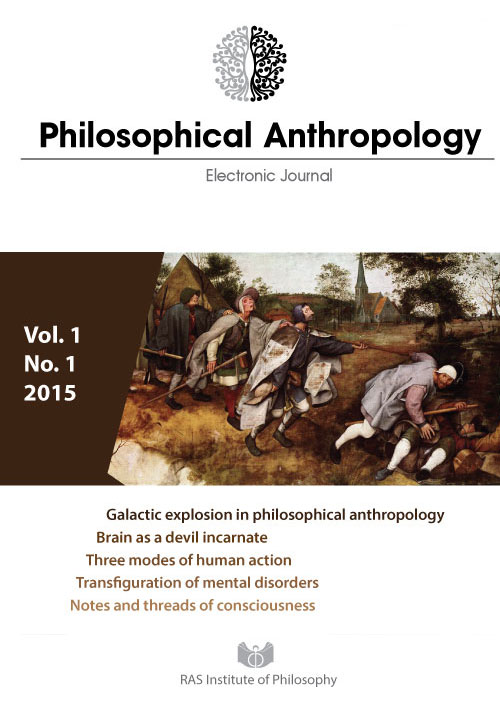Consciousness: knots and threads (an introductory essay in anthropology)
Keywords:
consciousness, sensuality, intelligence, Marxism, psychoanalysis, libido, biologism, replacement, alienation, inspirationAbstract
The study considers consciousness through the prism of historical-theoretical approach. The applied method of reduction distinguishes a number of basic functions that were rather independent at the dawn of history (and at the beginning of ontogeny also); only with time did they form consciousness into a relative unity. The study begins with criticizing popular concepts based on the fundamental methodological contraposition of nature to its other (i.e. consciousness). To analyze this mutual base, we use the cases of Marxism and psychoanalysis. The study shows that this contraposition inevitably leads to the mystification of consciousness. The alternative is to acknowledge the duality of nature, to distinguish specific lines of genesis that trigger and maintain different instincts. From this point of view, consciousness is no longer an element of the nature-consciousness opposition, but a link relating the two evolutionary based modes of reflective and spontaneous situational reactions. Thus, the problem of cognition, separated from the cognitive base and reverted to its original (and lost) sense, appears in a new light.
This article argues that:
- in its first dawn consciousness has little in common with familiar forms; rather, it is opposite to them. It is a “divine madness”, apophatically defined by the rejection of detachment based on the self-preservation urge. The positive support for this “divine madness” is the spirit of patriotism that inspires the coordinated spontaneous collective actions;
- in its origin consciousness is mainly initiative and not reflective. It does not follow the logic of the matter (which in the framework of this study is the otherness unity (the unity of the otherness) devoid of logic and thus different from the ordinary thingness). On the contrary, it draws the adepts together and throws them into the flow of initiative urge which has no underlying plan but relies on the mutual support of those illuminated by the (totemic) spirit.
- ceasing to slavishly obey the “logic” of thingness that deeply penetrates its pores, consciousness restores the precedent as a norm to be established which controls the external and the will-bound; in this volitional act consciousness is supported by the transcendental schematism that relates the precedent (of an unprecedented action) only with the support conditions, determined by expression and contagion aesthetics.
To reveal the linearity of consciousness one should overcome its hermetic unity which obviously mystically compensates its discrepancy.
The nature of consciousness is not confined to the cognitive function - a blinding annoying stereotype that ideology cunningly implanted aiming to narrow understanding of understanding and bury it in mechanicism and slavish obedience to the logic of the matter.
Consciousness should recover and recreate its original connection with freedom and establish it on the basis of being, therefore releasing it from mysticism. At the same time, cognition restores the original ontology letting the precedent dimension into its deep secret vaults. Consciousness contains being, binding together the extremely adventurous with the ordinary stereotypical, turning the former into the latter and making the latter the subject of the former.

